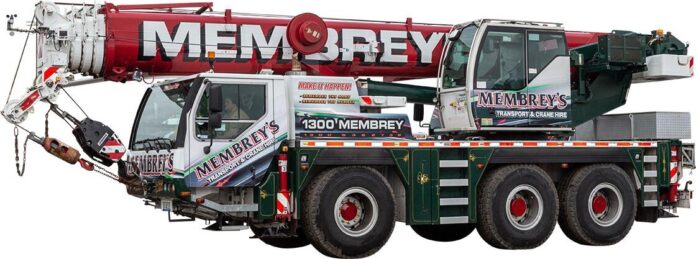Over the years mobile cranes have proven to be the machine of choice when it comes to lifting heavy objects. Almost every construction and demolition project will require a crane. Aside from lifting objects, cranes are useful when transporting or shifting heavy material from one location to the next. However, the crane you use can either make or break your project. That’s why it’s important to pick the right crane for your project if you want it to be a success.
Are you considering mobile crane hire? Crane hire companies will present you with multiple options to pick from. Each crane model is designed for a specific task. Deciding which type of crane to hire can be rather daunting, especially if it’s your first time. But don’t panic! We’ve taken the liberty to outline the factors you must look out for to pick the right crane for your intended project.
Weight of Load
The first thing you must pay attention to is the weight of the load you want to lift or transport. Cranes have different weight lifting capacities. Some models are designed to lift extremely heavy loads while others are best suited for low capacity loads.
Fortunately for you, there’s no guesswork involved as the weight lifting capacity is usually stated on the model. The idea is to pick a high-capacity crane to move a heavy load and a low capacity crane to transport a small load. Picking a crane with the right weight lifting capacity guarantees efficiency, not to mention load safety.
Along with the weight of the load, you must consider its nature. Are you transporting liquid or solid mass? Lifting conditions for liquid loads such as heavy petrol tanks differ from those involved when lifting concrete blocks. You need to pick the correct crane designed to safely transport a particular load.
Height of Load
Aside from weight, you must consider the height of the load. In other words, how high up do you want to lift your materials?
Just like cranes have weight lifting capacities, they also have height lifting capacities. The height of the material you want to lift determines the length of crane you use. For example, the higher the load, the longer the crane should be.
Just keep in mind that the higher the load, the higher the chances of it being swayed by the wind. That’s why you must also pay attention to the weather conditions prevalent on the day of the task so you can plan accordingly. Is it sunny and windless or extremely windy?
Distance Between Crane and Load
What is the horizontal distance between your load and the base of your crane? A crane’s weight lifting capacity is also based on the distance it moves to pick up the load. Its counterweight, support structure and stability are all affected by this distance. That’s why you’ll find that each crane has a load chart that explicitly states the amount of load it can hoist at any given point. Sticking to the recommended weight is crucial to ensure smooth operation.
The distance between the load and crane determines the type of crane you pick. For example, if you plan on lifting loads in tight spaces, you must hire an overhead crane.
Site Terrain
Mobile cranes are only efficient when moving on the terrains they are designed to operate on. Their stability when transporting a particular load is dependent on their ability to navigate the grounds. That’s why you must pick a suitable mobile crane depending on the terrain.
Is your site terrain even, uneven, flat or rough? For rough terrains, you’ll need to hire a rough-terrain crane. This is because rough-terrain cranes provide the mobility required to navigate these surfaces without compromising the support structure. Hire a truck-mounted mobile crane if the surface is even and firm.
Obstacles on Site
Together with site terrain, consider if you have any obstacles on your worksite. A crane’s ability to operate efficiently on a particular site depends on the nature of your site. Are there any buildings, trees or overhead scaffolds you need to move between? Such obstacles make it difficult for certain cranes to move a load from one place to the next. The presence of certain obstacles on your site also presents safety hazards. Hiring a crane that uses excellent radio controls is your best bet in this case.
If your worksite is characterised by tight spaces, you’ll also need a special kind of crane such as an overhead crane.
Conclusion
Hiring the correct mobile crane for your task is very important as it affects factors such as efficiency, project time and safety.
Follow our tips to pick the right crane for your project. When it comes to mobile crane hire Melbourne locals have different companies to pick from. We urge you to hire from a reputable crane company that leases out cranes which are in good working order. Also, make sure that a qualified and trained operator operates the crane to eliminate the risk of accidents or injuries.
Do you now have what it takes to hire the right mobile crane for your project? You’re welcome to leave your comments or additional questions below.


















